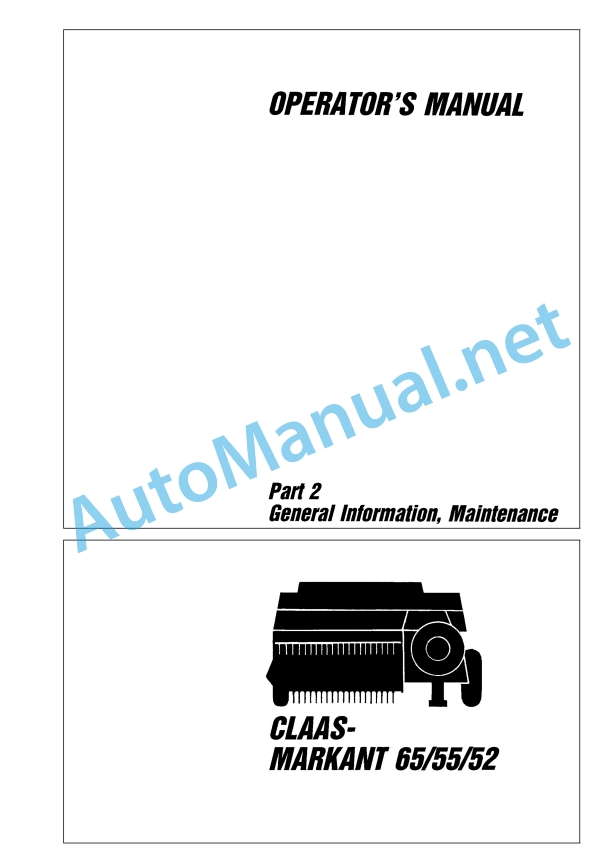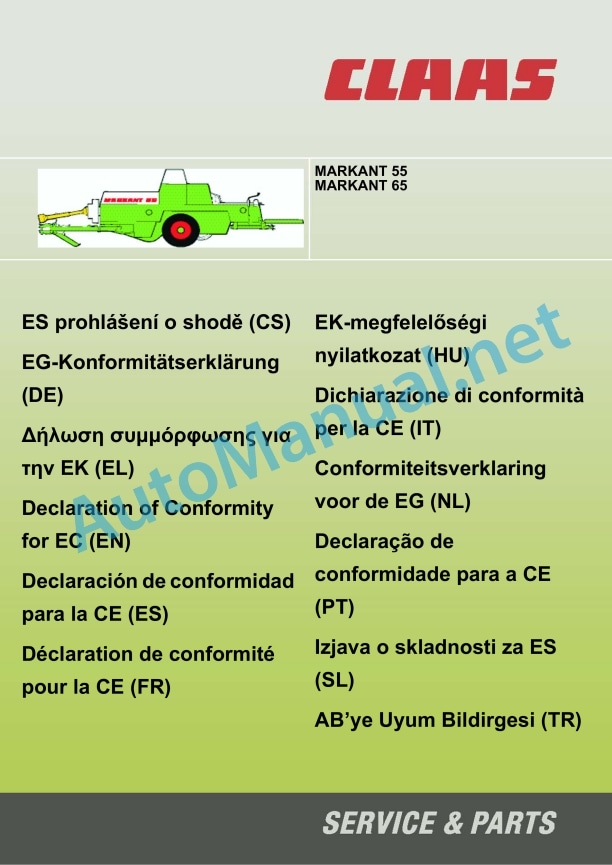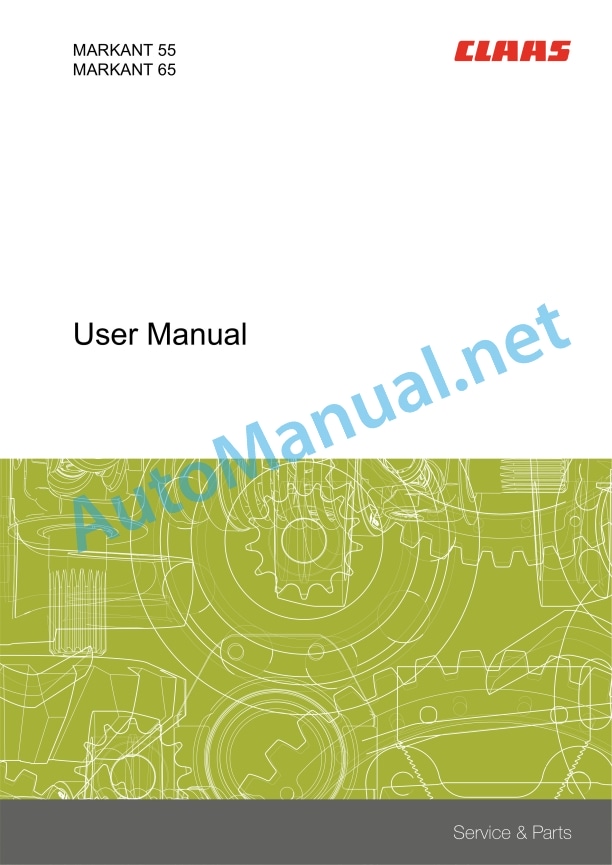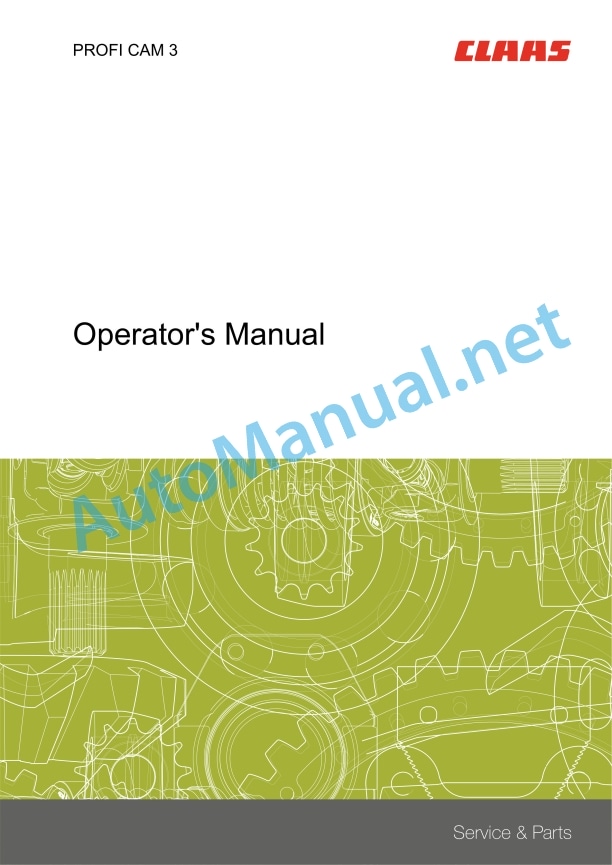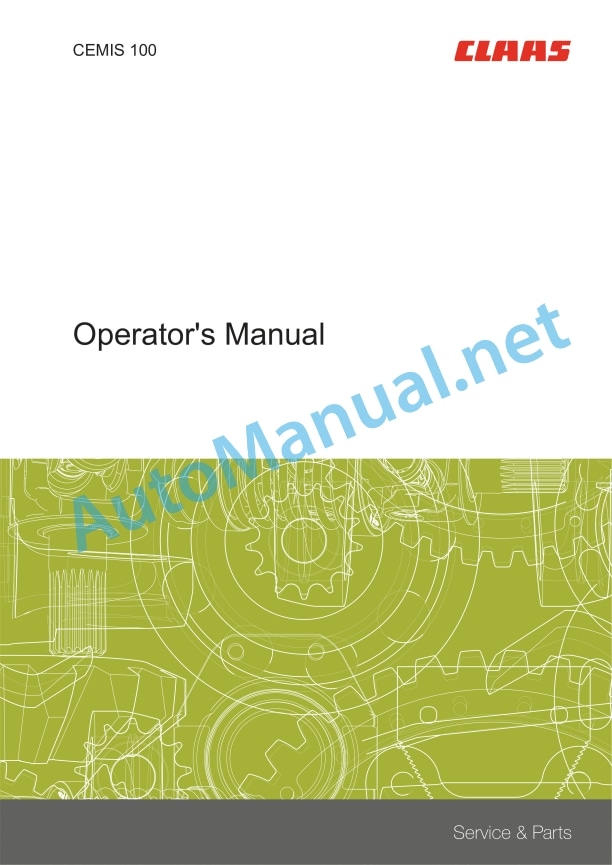Claas Markant 65 (041) Balers Operator Manual EN
$50.00
- Model: Markant 65 (041) Balers
- Type Of Manual: Operator Manual
- Language: EN
- Format: PDF(s)
- Size: 34.9 MB
File List:
00 0184 433 5.pdf
00 0184 440 6.pdf
00 0187 644 0.pdf
00 0292 275 0.pdf
00 0296 747 1.pdf
00 0301 051 0.pdf
00 2348 408 0.pdf
00 0292 275 0.pdf:
MARKING 55
MARKING 65
Inhaltsverzeichnis
1 User manual (CS)
1 Gltigkeit der Anleitung (DE)
1 Manual validity (EN)
1 Validity of the manual (ES)
1 Validity of the notice (FR)
1 A handbook geussge (HU)
1 Validity of the manual (IT)
1 Geldigheid van de handleiding (NL)
1 Validity of the manual (PT)
1 Veljavnost navod (SL)
1 Validity of Klavuzun (TR)
2 00 1331 050 0 – MARKANT 55 00 1331 051 0 – MARKANT 65
3 ES declaration or shod (CS)
3 EG-Konformittserklrung (DE)
3 Compliance with the EC (EL)
3 Declaration of Conformity for EC (EN)
3 Declaration of conformity for the EC (ES)
3 Declaration of conformity for the CE (FR)
3 EK-megfelelsgonatai za ES (SL)
3 AB’ye Uyum Bildirgesi (TR)
00 0296 747 1.pdf:
MARKANT 55MARKANT 65
Table of contents
1 To this operator’s manual
1.1 General Information
1.1.1 Manual validity
1.1.2 Technical specifications
1.1.3 Symbols and notes
1.1.4 Using the manual
2.1 General Information
2.1.1 General points
2.1.2 Using in line with intended usage
2.1.3 Reasonably foreseeable improper usage
2.1.4 Safety advice
2.1.5 Definition of hazard information
2.1.6 Driving on the road
2.1.7 Accident prevention
2.1.8 Waste disposal
2.1.9 Residual risks
2.2 Safety decals
2.2.1 Description
2.2.2 Location of safety stickers
2.3 Safety equipment
2.3.1 Indicator lights
2.3.2 Reflective equipment
2.3.3 Jack stand
2.3.4 Chocks
2.3.5 Locking the pick-up
2.3.6 Locking the bale ramp
3 Machine description
3.1 Existing model
3.1.1 Machine description
3.2 Overview and functions
3.2.1 Overview, front right-hand side
3.2.2 Overview, front left-hand side
3.2.3 Overview, rear right-hand side
3.3 Working and service areas
3.3.1 General points
3.4 Identification plate and serial number
3.4.1 Replacement parts and technical information
3.4.2 Position of identification plates
3.4.3 Machine identification plate description
3.5 General operating principle
3.5.1 Baling cycle
3.6 Transmission and drive
3.6.1 Power transmission
3.6.2 Slip clutch
3.6.3 Main drive
3.6.4 Tying device drive
3.6.5 Feed rake drive
3.6.6 Pick-up drive
3.7 Crop feeding
3.7.1 Pick-up
3.8 Feeder unit
3.8.1 Feed rakes
3.9 Baling system
3.9.1 Piston and bale chamber
3.10 Tying system
3.10.1 Tying process
3.10.2 Twine box
3.10.3 Baling wire box *
3.10.4 Needles
3.10.5 Knotters *
3.10.6 Twister *
3.11 Bale discharge
3.11.1 Bale ramp
3.12.1 Axle
3.13 Equipment
3.13.1 Mechanical counter
4 Technical specifications
4.1.1 General points
4.1.2 Dimensions
4.1.3 Weight
4.1.4 Hitching
4.1.5 Universal drive shaft
4.1.6 Feeding and baling
4.1.7 Tying device
4.1.8 Wheels
4.1.9 Hydraulic circuit
4.1.10 Bolt tightening torques
4.1.11 Greasing and lubrication
4.1.12 Noise level
4.2 Safety devices
4.2.1 Shear bolts
4.2.2 Overload clutch
4.3 Tractor
4.3.1 Power required
4.3.2 Power take-off
4.3.3 Hitching
4.3.4 Electrical connections
4.3.5 Hydraulic connections
4.3.6 Hydraulic oil and circuit
5 Machine preparation
5.1 General Information
5.1.1 Before first use
5.1.2 Checking the equipment
5.2 Universal drive shaft
5.2.1 Safety advice
5.2.2 Overlap of the universal drive shaft
5.2.3 Adapting the length of the universal drive shaft
5.2.4 Fitting the universal drive shaft
5.3 Coupling frame
5.3.1 Recommendations
5.3.2 Coupling types
5.3.3 Coupling mounting
5.3.4 Adapting the hitching height
5.3.5 Hitching the baler to the tractor
5.3.6 Fitting the universal drive shaft
5.3.7 Control cords
5.4 Hydraulic connections
5.4.1 Hose identification
5.4.2 Pick-up hydraulic control *
5.4.3 Drawbar hydraulic control *
5.5 Electrical connections
5.5.1 Lighting *
5.6 Twine tying
5.6.1 Twine quality
5.6.2 Preparation for twine tying
5.6.3 Adjusting the twine tensioner
5.6.4 Fitting the twine
5.6.5 Fitting the twine in the knotters
5.6.6 Checking the settings
5.7 Wire tying
5.7.1 Baling wire quality
5.7.2 Preparation for baling wire tying
5.7.3 Fitting the baling wire
5.7.4 Fitting the baling wire in the twister
5.7.5 Checking the twister settings
5.8 Loading the machine
5.8.1 Raising the baler
5.8.2 Lashing the baler
6 Operation
6.1 General Information
6.1.1 Baler user
6.1.2 Opening the doors and housings
Drive gearbox cover
Opening the drive gearbox cover
Closing the drive gearbox cover
Flywheel cover
Opening the flywheel cover
Closing the flywheel cover
Feed rake cover
Opening the feed rake cover
Closing the feed rake cover
Knotter cover
Opening the knotter cover
Closing the knotter cover
Twine box cover
Opening the twine box cover
Closing the twine box cover
6.2 Travelling with the baler
6.2.1 Checking the equipment
6.2.2 Preparing for transportation
6.2.3 Travelling on the road
6.2.4 Arriving at the field
6.2.5 Driving in fields
6.2.6 Parking
6.3 Before each usage
6.3.1 Reminders
6.3.2 Universal drive shaft
6.3.3 Baler maintenance
6.4 Commissioning in the field
6.4.1 User advice
6.4.2 Bale ramp
6.4.3 Starting the machine
6.5 Drawbar
6.5.1 Manoeuvring the drawbar
6.6 Pick-up
6.6.1 Important
6.6.2 Pick-up wheel (*)
6.6.3 Pick-up height
6.7 Baling
6.7.1 Baling pressure setting
6.7.2 Bale length setting
6.7.3 Manually ejecting the bale
6.8 Bale parameters
6.8.1 Baler settings
6.9 Unblocking the baler
6.9.1 How can blockages be avoided?
6.9.2 Safety advice
6.9.3 Blockage
6.10 After use
6.10.1 Reminders
6.10.2 Securing the baler
6.10.3 Unhitching the baler
6.10.4 Daily checks
6.10.5 Daily cleaning
7 Faults and remedies
7.1 Twine tying
7.1.1 Causes of tying faults
7.1.2 Resolving twine tying faults
7.2 Wire tying
7.2.1 Causes of baling wire tying faults
7.2.2 Resolving baling wire tying faults
7.3 Baling
7.3.1 Resolving baling faults
8 Maintenance
8.1 General maintenance Information
8.1.1 Maintenance and safety advice
8.1.2 Wheels and tyres
8.1.3 Hydraulic circuit
8.1.4 Chains
8.1.5 Universal drive shaft
8.1.6 Hitching
8.1.7 Safety devices
8.1.8 Bolts and nuts
8.1.9 Lubrication and greasing
8.1.10 Welding work
8.1.11 Replacement parts
8.2 Lubricants charts
8.2.1 Lubricants
8.3 Maintenance schedules
8.3.1 Maintenance operations before gathering crop
8.3.2 Maintenance operations after the first 10 hours of operation
8.3.3 Maintenance operations after the first 50 hours of operation
8.3.4 Maintenance operations every 10 hours of operation or every day
8.3.5 Maintenance operations every 50 hours of operation
8.3.6 Maintenance operations every 250 hours of operation
8.3.7 Maintenance operations annually or every 500 hours of operation
8.4 Basic settings
8.4.1 Baler basic settings
Checking the feed rake calibration
Left-hand feed rake calibration
MARKANT 55
MARKANT 65
Right-hand feed rake calibration
Needles-piston calibration
Activating the tying mechanism
Baler fitted with twine tying
Baler fitted with baling wire tying
Adjusting the needles-piston calibration
Needles/piston safety device
8.4.2 Piston knife
8.5 Maintenance operations gearbox
8.5.1 Drive gearbox
8.5.2 Drive chains
Feed rake drive chains – MARKANT 55 only
Pick-up drive chain
8.6 Maintenance operations clutch
8.6.1 Flywheel slip clutch
8.6.2 Pick-up slip clutch
8.6.3 Flywheel shear bolt
8.6.4 Feed rake shear bolts
8.7 Maintenance operations axle and wheels
8.7.1 Axle
8.7.2 Checking the wheel tightness
8.7.3 Changing the wheels
8.7.4 Wheel hub
8.7.5 Checking the tyres
8.8 Maintenance operations tying
8.8.1 Twine tying needles
Needle height
Activating the tying mechanism
Needle top dead centre:
Activating the tying mechanism
Needle length
Needles – piston position:
Replacing a needle
Needle brake
8.8.2 Needles – Baling wire tying
Needle height
Needle length
Needles – piston position:
Replacing a needle
Needle brake
8.8.3 Changing the needle brake pads
Removing a needle brake
Disassembling a needle brake
Assembling a needle brake
Fitting a needle brake
Adjusting a needle brake
8.8.4 Adjusting the twine tensioner
8.8.5 Knotter settings
8.8.6 Twister settings
Lateral play for the needles
Inspecting the clamps
Adjusting the clamps
Baling wire box
Wire guide tubes and rollers
8.8.7 Tying control shaft shear bolt
8.9 Maintenance operations hitch
8.9.1 Checking the jaw drawbar mounting
8.10 Lubrication chart
8.10.1 Lubrication intervals
8.10.2 Universal drive shaft
8.10.3 Lubrication points – 10 hrs
8.10.4 Lubrication points – 50 hrs
8.10.5 Lubrication points – 250 hrs
8.11 Winter storage
8.11.1 General points
8.11.2 Cleaning
8.11.3 Lubricating
8.11.4 Maintenance
8.11.5 Storage
9 Placing out of operation and disposal
9.1 General Information
9.1.1 Putting out of operation and disposal
10 EC-declaration of conformity
10.1 General Information
10.1.1 Declaration of Conformity for EC
00 0301 051 0.pdf:
PROFI CAM 3
Table of contents
1 Introduction
1.1 Notes on the manual
1.1.1 Validity of manual
1.1.2 Information about this Operator’s Manual
1.1.3 Symbols and notes
1.1.4 Optional equipment
1.1.5 Qualified specialist workshop
1.1.6 Maintenance information
1.1.7 Warranty notes
1.1.8 Spare parts and technical questions
1.2 Intended use
1.2.1 Intended use
1.2.2 Reasonably foreseeable misuse
2.1 Identifying warnings
2.1.1 Hazard signs
2.1.2 Signal word
2.2 Safety rules
2.2.1 Meaning of Operator’s Manual
2.2.2 Observing safety decals and warnings
2.2.3 Optional equipment and spare parts
3 Product description
3.1 Overview and method of operation
3.1.1 How the PROFI CAM works
3.2 Identification plates and identification number
3.2.1 Position of identification plates
3.2.2 Explanation of PROFI CAM identification plate
3.3 Information on the product
3.3.1 CE marking
4 Operating and control elements
4.1 Camera system
4.1.1 Camera system monitor
4.2 Menu structure
4.2.1 Main menu
4.2.2
4.2.3
4.2.4
4.2.5
4.2.6
5 Technical specifications
5.1 PROFI CAM
5.1.1 Monitor
5.1.2 Camera
5.1.3 Switch box
5.1.4 Degree of protection against foreign bodies and water
6 Preparing the product
6.1 Shutting down and securing the machine
6.1.1 Switching off and securing the machine
6.2 Prior to operation
6.2.1 Carry out prior to operation
6.2.2 Installing the sun protection
6.2.3 Aligning the camera
6.2.4 Connecting the camera electrics
7 Operation
7.1 Monitor
7.1.1 Switching on the monitor
7.1.2 Calling up the menu
7.1.3 Setting a menu item
7.1.4 Setting the image orientation
7.1.5 Setting automatic screen darkening
7.1.6 Image mirroring
7.1.7 Setting the trigger view
7.1.8 Setting the follow-up time for trigger view
7.1.9 Setting the display mode
7.1.10 Activating/deactivating a display mode
8 Faults and remedies
8.1 Electrical and electronic system
8.1.1 Overview of problems on PROFI CAM camera system
8.1.2 Replacing the switch box fuse
9 Maintenance
9.1 Maintenance intervals
9.1.1 Every 10 operating hours or daily
9.2 Camera system
9.2.1 Checking the camera system for dirt
9.2.2 Cleaning the camera
9.2.3 Cleaning the switch box
9.2.4 Cleaning the monitor
10 Placing out of operation and disposal
10.1 General Information
10.1.1 Putting out of operation and disposal
11 Technical terms and abbreviations
11.1 Abbreviations
11.1.1 Units
11.1.2 Abbreviations
11.1.3 Technical terms
00 2348 408 0.pdf:
Table of contents
1 Introduction
1.1 General information
1.1.1 Validity of the manual
1.1.2 Information about this Operator’s Manual
1.1.3 Symbols and notes
1.2 Intended use
1.2.1 Intended use
1.2.2 Reasonably foreseeable misuse
2.1 Safety rules
2.1.1 General safety and accident prevention regulations
2.1.2 Interaction between terminal and machine or tractor
2.1.3 Electrocution by electrical system
3 Product description
3.1 Overview and method of operation
3.1.1 Overview of CEMIS 100
3.1.2 Function principle of CEMIS 100
3.2 Identification plates and identification numbers
3.2.1 Spare parts and technical questions
3.2.2 Identification plate of CEMIS 100
4 Operating and display elements
4.1 CEMIS 100
4.1.1 User interface for LINER
4.1.2 User interface for ROLLANT
4.1.3 User interface for UNIWRAP
5 Technical specifications
5.1 CEMIS 100
5.1.1 Specification
6 Operation
6.1 CEMIS 100
6.1.1 Operating the CEMIS 100
6.1.2 Switching CEMIS 100 on
6.1.3 Switching CEMIS 100 off
7 Maintenance
7.1 CEMIS 100
7.1.1 Daily
8 Putting out of operation and disposal
8.1 General information
8.1.1 Removal from service and disposal
9 Technical terms and abbreviations
9.1 Terms and explanations
9.1.1 Technical words
9.1.2 Abbreviations
John Deere Repair Technical Manual PDF
John Deere DF Series 150 and 250 Transmissions (ANALOG) Component Technical Manual CTM147 05JUN98
John Deere Repair Technical Manual PDF
John Deere 18-Speed PST Repair Manual Component Technical Manual CTM168 10DEC07
John Deere Repair Technical Manual PDF
John Deere Repair Technical Manual PDF
John Deere Parts Catalog PDF
John Deere Tractors 6300, 6500, and 6600 Parts Catalog CQ26564 (29SET05) Portuguese
John Deere Repair Technical Manual PDF
John Deere Diesel Engines PowerTech 4.5L and 6.8L – Motor Base Technical Manual 07MAY08 Portuguese
John Deere Repair Technical Manual PDF
John Deere Repair Technical Manual PDF
John Deere Transmission Control Unit Component Technical Manual CTM157 15JUL05
John Deere Repair Technical Manual PDF
John Deere Repair Technical Manual PDF



